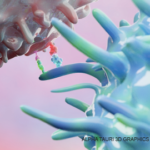 ACR CONVERGENCE 2020—Rheumatology is a field that involves a complex understanding of autoimmunity from the macroscopic scale—epidemiology of disease, global trends, etc.—down to the most fundamental level of the immune system. With this in mind, the Basic Science Year in Review, presented at ACR Convergence 2020, was extremely helpful in allowing the audience to see both the forest and the trees.
ACR CONVERGENCE 2020—Rheumatology is a field that involves a complex understanding of autoimmunity from the macroscopic scale—epidemiology of disease, global trends, etc.—down to the most fundamental level of the immune system. With this in mind, the Basic Science Year in Review, presented at ACR Convergence 2020, was extremely helpful in allowing the audience to see both the forest and the trees.
Richard Bucala, MD, PhD, Waldemar Von Zedtwitz Professor of Medicine (Rheumatology) and chief of the Division of Rheumatology, Allergy, and Immunology at Yale School of Medicine in New Haven, Conn., discussed several topics in this vein, namely: 1) autoantibody origin and persistence; 2) insights into the major histocompatibility complex (MHC); and 3) factors in rheumatoid arthritis progression and relapse.
Autoantibody Origin & Persistence
In an article this year in Cell, Singh et al. looked into how pathogenic autoantibody-producing B cells arise, persist and evade the immune system to produce disease.1 The authors noted that the pathogenesis of autoimmune disease has long been hypothesized to share some of the key features of lymphoid cancer, but to date it has not been possible to test whether lymphoma driver somatic mutations contribute to autoimmunity because these autoantibody-forming cells are quite rare.
Because rheumatoid factor (RF) antibodies in mixed (type II) cryoglobulinemic vasculitis have similar variable region sequences that are responsible for pathology in numerous independent cases of a particular autoimmune disease, the authors investigated RF autoantibody in four patients with primary Sjögren’s syndrome. Single-cell DNA and RNA sequencing revealed a cascade of somatic genetic events that included immunoglobulin gene V(D)J recombination, B cell proliferation with low rate immunoglobulin gene mutation and modest affinity maturation, acquisition of mutations in lymphoma and/or leukemia driver genes, and collection of specific V(D)J mutations that allowed for the transition from a benign RF to cryoglobulinemic vasculitis.
Dr. Bucala noted that, in revealing this RF autoantibody clonal evolution, the authors shed light on the clinical transition from benign to pathogenic autoantibodies and helped to explain increased cancer risk that can be seen with certain autoimmune diseases, such as with Sjögren’s syndrome and lymphoma.
In a separate paper, Bashford-Rogers et al. asked if B cell receptors shared features, such as B cell clonality, across different autoimmune diseases.2 In this study, investigators conducted sequence analysis of immunoglobulin heavy-chain variable (IGHV) region genes and isotype use in over 200 patients with systemic lupus erythematosus (SLE), Behçet’s disease, Crohn’s disease, anti-neutrophil cytoplasmic autoantibody vasculitis, eosinophilic granulomatosis with polyangiitis (EGPA) and IgA vasculitis.
The authors found that SLE, Crohn’s disease and EGPA all demonstrated abnormal isotype-specific clonal expansion or diversity and abnormal use of the IGHV genes, which would be consistent with the association of multiple antibodies as seen in these diseases. In addition, increased IgA isotype usage was seen in Crohn’s disease and in SLE, even though the latter was an unexpected finding given that IgG is implicated in pathogenesis for lupus and intestinal inflammation is not prominent.
These findings suggest that SLE, Crohn’s disease and EGPA may share drivers within the mucosal microbiome, given known IGHV affinities for microbial antigens.
RNA sequencing, in particular single-cell RNA sequencing, has become an extremely important tool in understanding the fundamental aspects of disease pathophysiology in the field of rheumatology.
Insights into the Major Histocompatibility Complex
Dr. Bucala also discussed work by Kamitaki et al. that explored complement as the possible missing genetic link for SLE and primary Sjögren’s syndrome.3 The team used whole-genome sequence data to identify variants of C4A and C4B (i.e., the two genes that encode for the complement protein C4) from more than 1,260 individuals to create a reference haplotype to impute C4 alleles from single-nucleotide polymorphisms in more than 6,700 patients with SLE and more than 11,500 controls.
In their paper, the authors noted that variation in the copy number of C4A and C4B was associated with seven times the difference in risk for SLE and 16 times the difference in risk for primary Sjögren’s syndrome. In addition, increased copy numbers for C4A and C4B were associated with protective effects for both diseases.
Given that the copy number variation of the C4 genes explains, at least in part, the genetic association in the MHC locus for SLE and primary Sjögren’s syndrome, this implies that the complement pathway is an important contributor to the development of these autoimmune disorders.
RA Progression & Relapse
Dr. Bucala concluded his lecture with a discussion of basic science advances with respect to rheumatoid arthritis (RA). In one study, Wei et al. used single-cell RNA sequencing and synovial tissue organoids to show that NOTCH3 and Notch target genes are markedly upregulated in synovial fibroblasts in active rheumatoid arthritis.4 These findings help shed light on what mechanisms help drive synovial expansion (i.e., pannus) in active RA.
In a separate study, researchers used single-cell transcriptomics to profile 32,000 synovial tissue macrophages to describe phenotypic changes in patients with early, active RA, treatment-refractory active disease and disease in sustained remission.5
In the final study discussed by Dr. Bucala, researchers sought to look at the molecular and cellular predictors of flare in RA. In using RNA sequencing to evaluate blood samples collected during periods of disease flares, researchers found consistent changes in blood transcriptional profiles one to two weeks before a flare. These circulating flare antecedent preinflammatory mesenchymal, or PRIME, cells appear to traffic to the synovium and perpetuate inflammation.6
In Sum
As can be seen by the studies discussed in this lecture, RNA sequencing—in particular single-cell RNA sequencing, has become an extremely important tool in understanding the fundamental aspects of disease pathophysiology in the field of rheumatology. RNA sequencing is a method that allows for the detection and quantitative analysis of messenger RNA (mRNA) molecules in a biological sample and has been found to be quite useful for studying cellular responses.
Since evaluating the entirety of the proteome—the thousands of proteins expressed by the genome that exist in a single cell—can be challenging, the transcriptome, in the form of mRNA, can be used as a proxy to understand cellular traits and changes in cellular state.7 Dr. Bucala nicely demonstrated in his lecture the past, present and future of this and other technologies in aiding our understanding of the many facets of rheumatologic disease.
Thus, the review ended with the promise that we, as rheumatologists, are closing in on a clearer understanding of the causes of rheumatic disease. With this silver lining to an otherwise topsy-turvy year, clinicians and basic science researchers alike can be optimistic for what 2021 has in store.
Jason Liebowitz, MD, completed his fellowship in rheumatology at Johns Hopkins University, Baltimore, where he also earned his medical degree. He is currently in practice with Skylands Medical Group, N.J.
References
- Singh M, Jackson KJL, Wang JJ, et al. Lymphoma driver mutations in the pathogenic evolution of an iconic human autoantibody. 2020 Mar 5;180(5):878–894.e19.
- Bashford-Rogers RJM, Bergamaschi L, McKinney EF, et al. Analysis of the B cell receptor repertoire in six immune-mediated diseases. 2019 Oct;574(7776):122–126.
- Kamitaki N, Sekar A, Handsaker RE, et al. Complement genes contribute sex-biased vulnerability in diverse disorders. 2020 Jun;582(7813):577–581.
- Wei K, Korsunsky I, Marshall JL, et al. Notch signaling drives synovial fibroblast identity and arthritis pathology. 2020 Jun;582(7811):259–264.
- Alivernini S, MacDonald L, Elmesmari A, et al. Distinct synovial tissue macrophage subsets regulate inflammation and remission in rheumatoid arthritis. Nat Med. 2020 Aug;26(8):1295–1306.
- Orange DE, Yao V, Sawicka K, et al. RNA identification of PRIME cells predicting rheumatoid arthritis flares. N Engl J Med. 2020 Jul 16;383(3):218–228.
- Haque A, Engel J, Teichmann SA, et al. A practical guide to single-cell RNA-sequencing for biomedical research and clinical applications. Genome Med. 2017 Aug 18;9(1):75.


